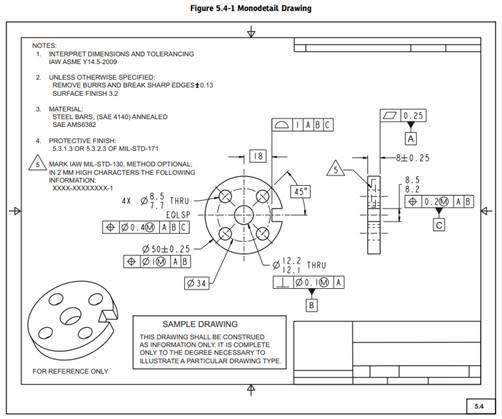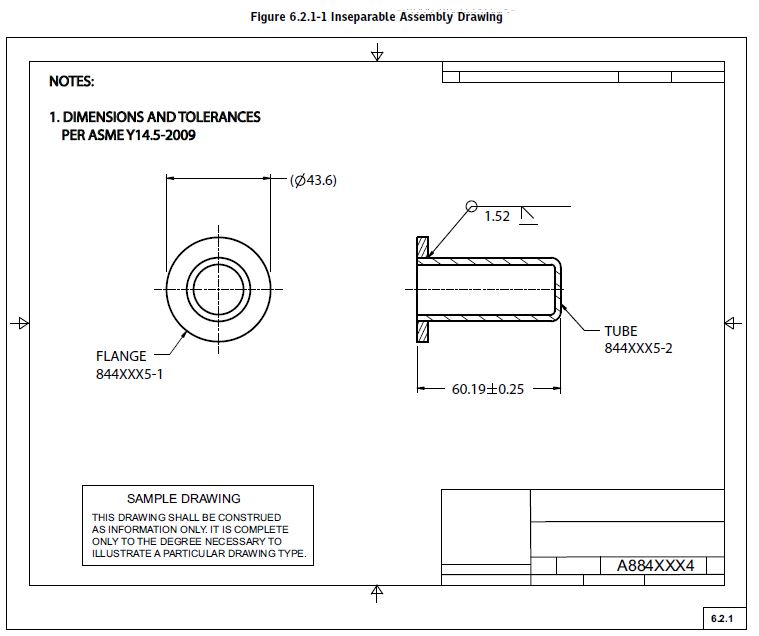Morning everyone. I'm having difficulty finding a standard the supports the use of centerlines when NOT used for a dimension. Recently the use of centerlines in a side view was challenged, not because it made the drawing unclear but because the individual didn't want to add them and is requesting a standard that say they have to be there. Personal opinions must give way to official standards. If there is no official standard then the company standard is applied, and changed based on the loudest voice.
Our company has required them on prints for years because it was common knowledge to use centerlines when drafting a part. Everyone does agree that centerlines are required when used to dimension a feature. But I cannot find any standard that specifies the requirement for them when used without a dimension.
ASME 14.100, 14.2, 14.24, and 14.3 all cover engineering drawings in some way and speak to the use of centerlines with dimensions. One of them talks about ensuring the drawing is clear and readable. Which lends it to the “how we apply it” argument.
ASME y14.2-20014
Section 4.7 Center lines
[highlight #FCE94F]When used[/highlight], center lines represent axes, center points, or center planes of symmetrical parts and features, bolt
circles, and paths of motion…
"When used" does not equal "must use". But in almost every example drawing used, in almost every ASME standard, centerlines are shown in side views and they are not use for a dimension. Is it safe to say that if the example drawings in the standards use them, then its a requirement? or is it just an example of "when used" but not required?
ASME y14.24-2000 fig 5.4-1

Our company has required them on prints for years because it was common knowledge to use centerlines when drafting a part. Everyone does agree that centerlines are required when used to dimension a feature. But I cannot find any standard that specifies the requirement for them when used without a dimension.
ASME 14.100, 14.2, 14.24, and 14.3 all cover engineering drawings in some way and speak to the use of centerlines with dimensions. One of them talks about ensuring the drawing is clear and readable. Which lends it to the “how we apply it” argument.
ASME y14.2-20014
Section 4.7 Center lines
[highlight #FCE94F]When used[/highlight], center lines represent axes, center points, or center planes of symmetrical parts and features, bolt
circles, and paths of motion…
"When used" does not equal "must use". But in almost every example drawing used, in almost every ASME standard, centerlines are shown in side views and they are not use for a dimension. Is it safe to say that if the example drawings in the standards use them, then its a requirement? or is it just an example of "when used" but not required?
ASME y14.24-2000 fig 5.4-1


